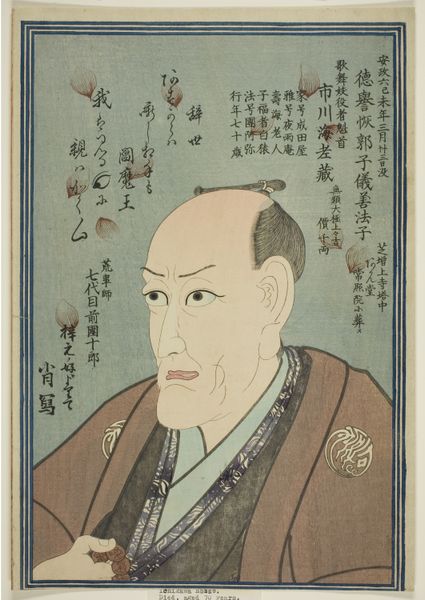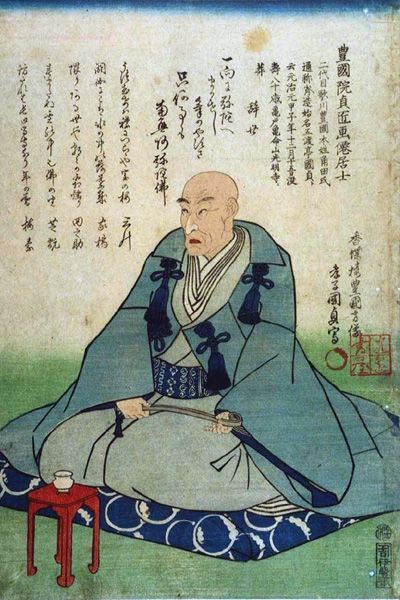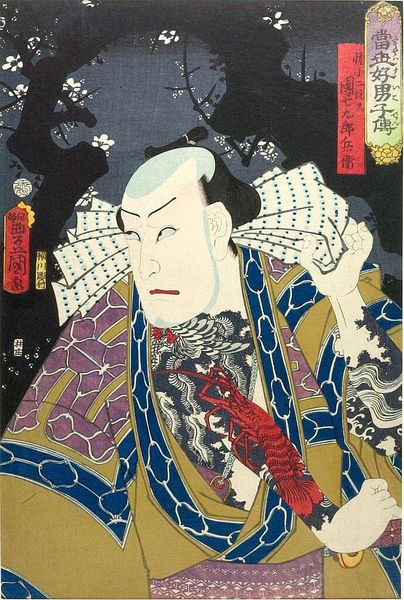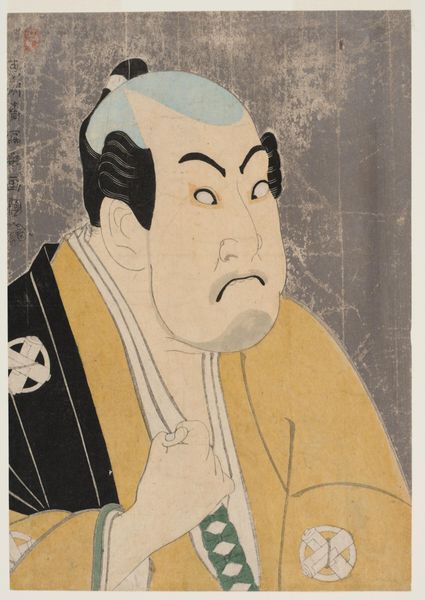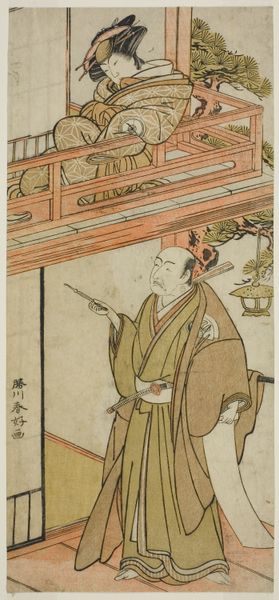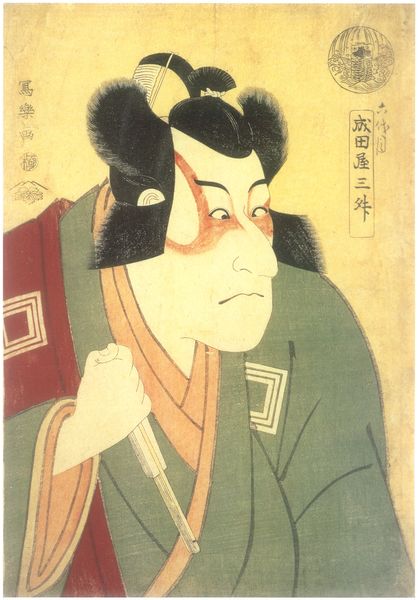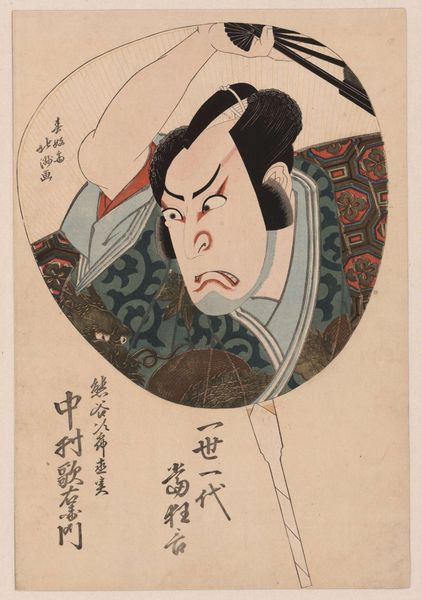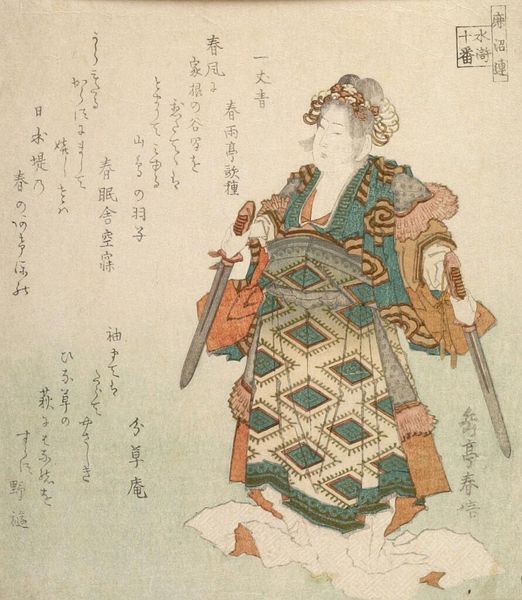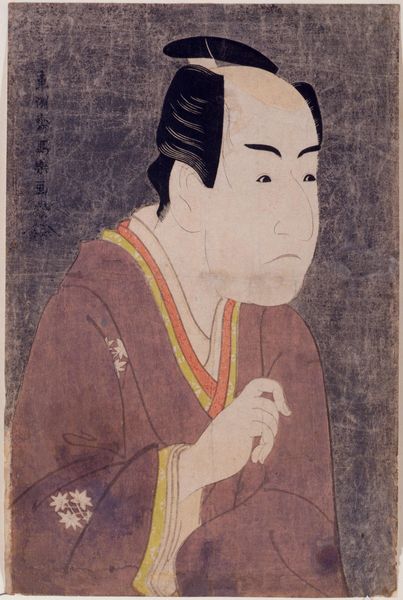
Copyright: Public Domain: Artvee
Tsukioka Yoshitoshi's woodblock print depicts Ichikawa Danjūrō IX, a famous Kabuki actor, in the role of Akamatsu Manyū Ume no Shirahata. It was created in Japan during the Meiji era, a time of rapid modernization and Westernization. The print showcases the intricate visual codes of Kabuki theatre. The actor's dramatic makeup and costume, along with the stylized pose, convey the character's persona and story. But this print is more than a record of a popular play. The Meiji era saw the rise of mass media and popular culture. Kabuki actors became celebrities, and prints like these served as publicity, connecting the stage with a wider audience. To understand this print fully, we would need to examine Kabuki's institutional history and its relationship with the government. Was it seen as a traditional art to be preserved, or as a popular entertainment to be modernized? We can use playbills, newspapers, and other primary sources to get a better understanding of this. The meaning of this print, like any artwork, is contingent on its social and institutional context.
Comments
No comments
Be the first to comment and join the conversation on the ultimate creative platform.
